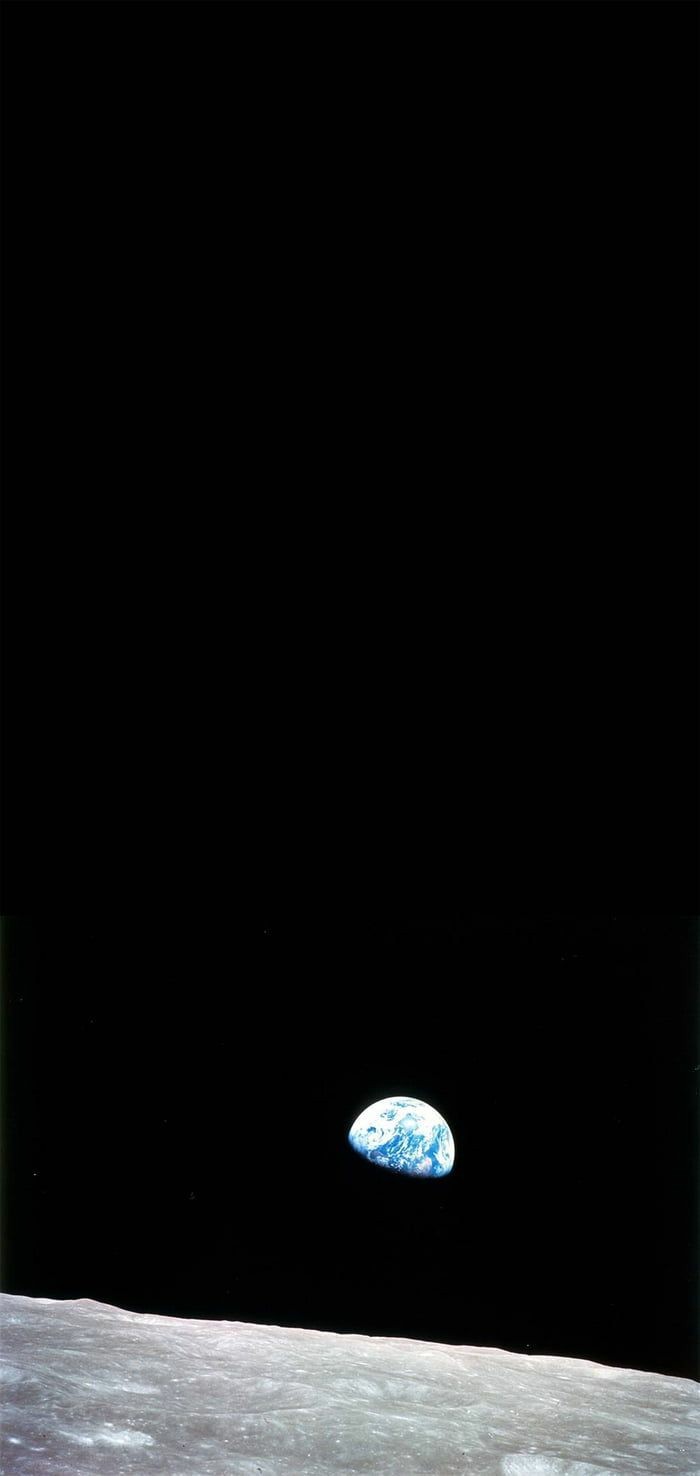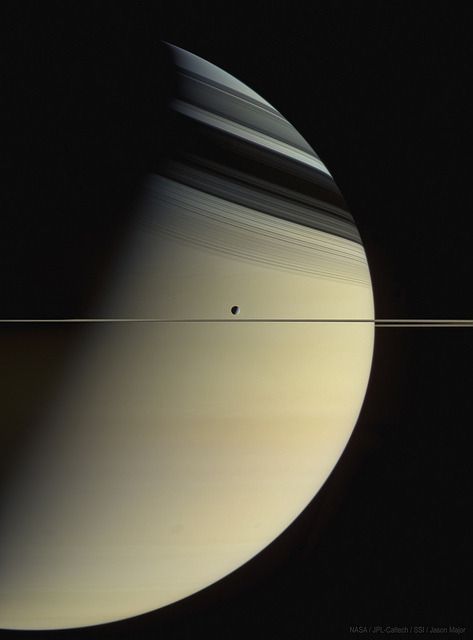Earthrise, Bill Anders, 1968.

Earthrise, Bill Anders, 1968.
More Posts from Spacenik and Others

While appearing as a delicate and light veil draped across the sky, this image from the NASA/ESA Hubble Space Telescope actually depicts a small section of the Cygnus supernova blast wave, located around 2,400 light-years away. The name of the supernova remnant comes from its position in the northern constellation of Cygnus (the Swan), where it covers an area 36 times larger than the full Moon.
Image Credit: NASA/ESA Hubble Space Telescope

How our neighbouring Andromeda galaxy will appear from Earth, approaching our galaxy Milky Way over a span of several billion years into the future
Source : Imgur

Titan as seen through three different filters, captured on May 15th, 2013 via Imaging Science Subsystem (ISS) from 1.55 million miles (2.49 million kms) away.
Image Credit : NASA / JPL / SSI

A dazzling capture of vivid space-scape by Casey Good. It spans across nebula rich star fields along the plane of our Milky Way. To the north lies the royal northern constellation Cepheus. To the left of centre is (sh) 155 — the Cave Nebula. At VDB 155 at lower right are the Dusty blue reflection nebulae.
Source : NASA
Majestic Godzilla galaxy or UGC 2885, 2.5 million times wider than our home galaxy Milky Way, with one trillion stars in its crib, captured by Hubble


Source : NASA&Hubble

Egg NebulaPhoto by geckzilla via flickr(cc)
Crab Nebula, zoomed in.

Saturn and Dione , 2005
credits : NASA

The arrangement of the spiral arms in the galaxy Messier 63, seen here in an image from the NASA/ESA Hubble Space Telescope, recall the pattern at the center of a sunflower.
Credit: ESA/Hubble&NASA

WISE helps map the beautiful spiral arms of our galaxy Milky Way.
WISE mission – NASA
Credit : NASA/Twitter
-
 saleslyla reblogged this · 1 month ago
saleslyla reblogged this · 1 month ago -
 mlnitu liked this · 2 years ago
mlnitu liked this · 2 years ago -
 untrust-us liked this · 3 years ago
untrust-us liked this · 3 years ago -
 h0w-eveer reblogged this · 3 years ago
h0w-eveer reblogged this · 3 years ago -
 h0w-eveer liked this · 3 years ago
h0w-eveer liked this · 3 years ago -
 arteesticpleasures22 liked this · 3 years ago
arteesticpleasures22 liked this · 3 years ago -
 hypopapillon liked this · 3 years ago
hypopapillon liked this · 3 years ago -
 imthevibration liked this · 3 years ago
imthevibration liked this · 3 years ago -
 almalusasblog liked this · 3 years ago
almalusasblog liked this · 3 years ago -
 fuckingblackheart liked this · 3 years ago
fuckingblackheart liked this · 3 years ago -
 alma-lusa liked this · 3 years ago
alma-lusa liked this · 3 years ago -
 infinityaugust8 reblogged this · 3 years ago
infinityaugust8 reblogged this · 3 years ago -
 infinityaugust8 liked this · 3 years ago
infinityaugust8 liked this · 3 years ago -
 gersv8 liked this · 3 years ago
gersv8 liked this · 3 years ago -
 ttsosunpelotudo liked this · 3 years ago
ttsosunpelotudo liked this · 3 years ago -
 xxwooooxx liked this · 4 years ago
xxwooooxx liked this · 4 years ago -
 thebeerdoc liked this · 4 years ago
thebeerdoc liked this · 4 years ago -
 dwelling-in-twilight liked this · 4 years ago
dwelling-in-twilight liked this · 4 years ago -
 levoyager liked this · 4 years ago
levoyager liked this · 4 years ago -
 inoutelsewhere liked this · 4 years ago
inoutelsewhere liked this · 4 years ago -
 omar-hatem liked this · 4 years ago
omar-hatem liked this · 4 years ago -
 roger4616 liked this · 4 years ago
roger4616 liked this · 4 years ago -
 ashe28 liked this · 4 years ago
ashe28 liked this · 4 years ago -
 vusall liked this · 4 years ago
vusall liked this · 4 years ago -
 thomasvillesaint-0i liked this · 4 years ago
thomasvillesaint-0i liked this · 4 years ago -
 museumofmyhe4rt reblogged this · 4 years ago
museumofmyhe4rt reblogged this · 4 years ago -
 sunburstsol liked this · 4 years ago
sunburstsol liked this · 4 years ago -
 themanwhoshowerswithhoneysoap liked this · 4 years ago
themanwhoshowerswithhoneysoap liked this · 4 years ago -
 umbra18 liked this · 4 years ago
umbra18 liked this · 4 years ago -
 aga-martwa93 liked this · 4 years ago
aga-martwa93 liked this · 4 years ago -
 azphotographer liked this · 4 years ago
azphotographer liked this · 4 years ago -
 nlockett reblogged this · 4 years ago
nlockett reblogged this · 4 years ago -
 nlockett liked this · 4 years ago
nlockett liked this · 4 years ago -
 tu-ternurauwu reblogged this · 4 years ago
tu-ternurauwu reblogged this · 4 years ago -
 vottremurmure liked this · 4 years ago
vottremurmure liked this · 4 years ago -
 lightyearperception reblogged this · 4 years ago
lightyearperception reblogged this · 4 years ago
